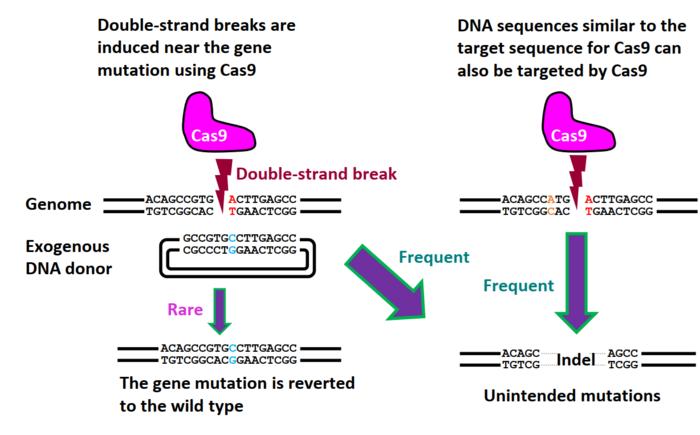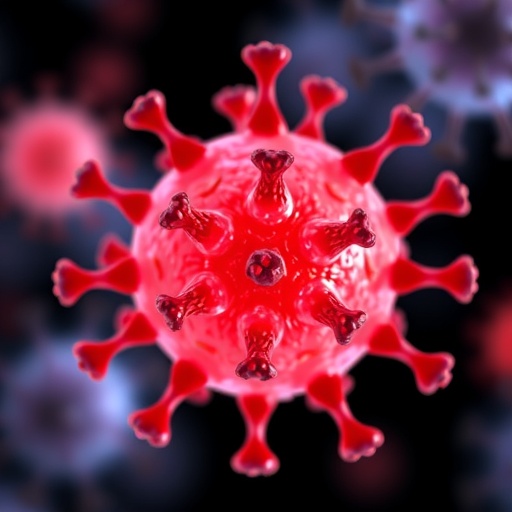Osaka, Japan – The gene editing technique CRISPR/Cas9 has allowed researchers to make precise and impactful changes to an organism’s DNA to fix mutations that cause genetic disease. However, the CRISPR/Cas9 method can also result in unintended DNA mutations that may have negative effects. Recently, researchers in Japan have developed a new gene editing technique that is as effective as CRISPR/Cas9 while significantly reducing these unintended mutations.

Credit: S. Nakada
Osaka, Japan – The gene editing technique CRISPR/Cas9 has allowed researchers to make precise and impactful changes to an organism’s DNA to fix mutations that cause genetic disease. However, the CRISPR/Cas9 method can also result in unintended DNA mutations that may have negative effects. Recently, researchers in Japan have developed a new gene editing technique that is as effective as CRISPR/Cas9 while significantly reducing these unintended mutations.
In a new study published in Nature Communications, researchers led by Osaka University introduced a novel technique called NICER, which is based on the creation of multiple small cuts in single DNA strands by an enzyme called a nickase.
Traditional CRISPR/Cas9 editing uses small pieces of genetic code called guide RNAs and an enzyme called Cas9. The guide RNAs target a specific section of the DNA and the Cas9 enzyme initiates a break in the double-stranded DNA structure at this location. This double-strand break is key for initiating changes to the DNA. However, cellular repair of double-strand breaks can lead to unintended DNA mutations, as well as the integration of exogenous DNA to the human genome, which raises safety concerns for clinical applications of CRISPR/Cas9 technology. To minimize these unintended mutations, the Osaka University-led research team investigated the use of Cas9 nickase, which creates single-strand breaks or “nicks” in DNA that are typically repaired without causing mutations.
“Each chromosome in the genome has a ‘homologous’ copy,” says lead author of the study Akiko Tomita. “Using the NICER technique, heterozygous mutations – in which a mutation appears in one chromosome but not its homologous copy – are repaired using the unmutated homologous chromosome as a template.”
For their initial experiments, the research team used human lymphoblast cells with a known heterozygous mutation in a gene called TK1. When these cells were treated with nickase to induce a single cut in the TK1 region, TK1 activity was recovered at a low rate. However, when the nickase induced multiple nicks in this region on both homologous chromosomes, gene correction efficiency was enhanced approximately seventeen-fold via activation of a cellular repair mechanism.
“Further genomic analysis showed that the NICER technique rarely induced off-target mutations,” says senior author Shinichiro Nakada. “We were also pleased to find that NICER was able to restore the expression of disease-causing genes in cells derived from genetic diseases involving compound heterozygous mutations.”
Because the NICER method does not involve DNA double-strand breaks or the use of exogenous DNA, this technique appears to be a safe alternative to conventional CRISPR/Cas9 methods. NICER may represent a novel approach for the treatment of genetic diseases caused by heterozygous mutations.
###
The article, “Inducing multiple nicks promotes interhomolog homologous recombination to correct heterozygous mutations in somatic cells,” will be published in Nature Communications at DOI: https://doi.org/10.1038/s41467-023-41048-5.
About Osaka University
Osaka University was founded in 1931 as one of the seven imperial universities of Japan and is now one of Japan’s leading comprehensive universities with a broad disciplinary spectrum. This strength is coupled with a singular drive for innovation that extends throughout the scientific process, from fundamental research to the creation of applied technology with positive economic impacts. Its commitment to innovation has been recognized in Japan and around the world, being named Japan’s most innovative university in 2015 (Reuters 2015 Top 100) and one of the most innovative institutions in the world in 2017 (Innovative Universities and the Nature Index Innovation 2017). Now, Osaka University is leveraging its role as a Designated National University Corporation selected by the Ministry of Education, Culture, Sports, Science and Technology to contribute to innovation for human welfare, sustainable development of society, and social transformation.
Website: https://resou.osaka-u.ac.jp/en
Journal
Nature Communications
DOI
10.1038/s41467-023-41048-5
Method of Research
Experimental study
Subject of Research
Lab-produced tissue samples
Article Title
Inducing multiple nicks promotes interhomolog homologous recombination to correct heterozygous mutations in somatic cells
Article Publication Date
15-Sep-2023




